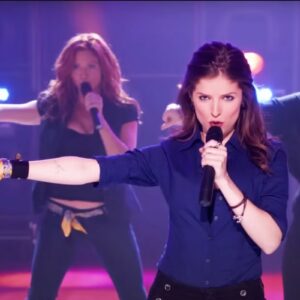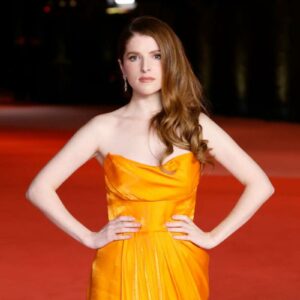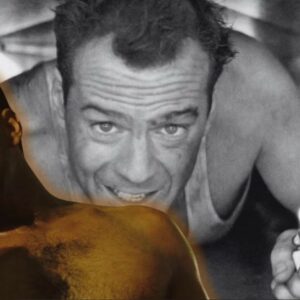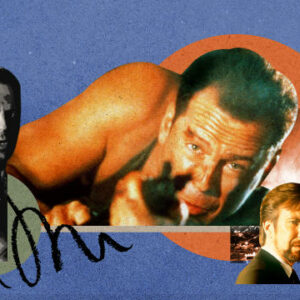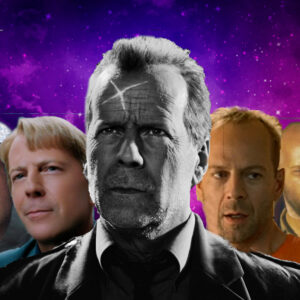When Ryan Reynolds first donned the red and black suit of Deadpool, fans of the wisecracking antihero were both thrilled and apprehensive. The character, a Marvel Comics staple known for his irreverent humor and breaking the fourth wall, seemed like the perfect match for Reynolds’ brand of charisma. However, behind the scenes, Reynolds faced a slew of challenges in portraying this beloved antihero. These obstacles ranged from the physical demands of the role to the complex psychological landscape that Deadpool inhabits. As Reynolds brought this character to life, his journey was marked by both triumphs and trials that were as intricate as the character he portrayed.
1. Embracing Deadpool’s Complex Character
Deadpool, also known as Wade Wilson, is not your typical superhero. Created by writer Fabian Nicieza and artist Rob Liefeld, Deadpool was designed to be a blend of parody and tribute to the superhero genre. His storylines often mix irreverent humor with intense action and deep emotional moments, which presents a unique challenge for any actor. For Reynolds, capturing the essence of Deadpool meant embracing a character who is as mentally complex as he is physically dynamic.
Reynolds had to grapple with Deadpool’s distinctive voice—his irreverent sense of humor and his constant breaking of the fourth wall, addressing the audience directly. This aspect of the character was crucial to his appeal but also posed a significant challenge. Reynolds needed to navigate the fine line between humor and pathos, delivering Deadpool’s sardonic quips while also conveying the underlying pain and vulnerability of Wade Wilson. This duality required Reynolds to tap into his emotional depth while maintaining a high level of comedic timing.
2. Physical Demands and Stunt Work
The physical demands of playing Deadpool were immense. The character’s combat skills, acrobatics, and high-energy action sequences required Reynolds to undergo rigorous training. This involved extensive stunt work, martial arts training, and maintaining peak physical condition. The physicality of the role was not just about performing stunts but also about embodying the character’s physical prowess and agility.
Reynolds worked closely with a team of choreographers and stunt coordinators to ensure that his performance was both authentic and safe. The process involved long hours of practice and repetition to perfect the intricate fight sequences and acrobatic moves. Reynolds also had to contend with the challenges of performing in a full-body suit, which, while iconic, was often restrictive and uncomfortable. This suit, combined with the physical demands of the role, meant that Reynolds had to balance his performance between high-energy action and the physical constraints of the costume.
3. Navigating the Suit: Comfort vs. Performance
One of the most recognizable aspects of Deadpool is his distinctive red and black costume. However, while the suit is integral to the character’s identity, it presented its own set of challenges. The costume, designed to be both functional and visually striking, was often cumbersome and challenging for Reynolds to wear.
The suit was equipped with various components, including mask, body armor, and tactical gear. Reynolds had to contend with the limitations of the suit while performing his scenes. The mask, in particular, posed a significant challenge as it needed to convey Deadpool’s emotions and expressions despite being a full-face covering. This required meticulous attention to detail in the costume design and performance.
Reynolds and the costume department had to work in tandem to ensure that the suit allowed for maximum mobility while still maintaining its iconic look. This involved constant adjustments and modifications to balance comfort with performance, ensuring that Reynolds could move freely and perform stunts without compromising the suit’s integrity.
4. Balancing Humor with Depth
Deadpool is renowned for his irreverent humor and meta-commentary. His ability to break the fourth wall and make self-referential jokes adds a unique layer to the character. Reynolds needed to master the art of balancing this humor with the deeper, more emotional aspects of Deadpool’s character.
This balance was crucial for making Deadpool’s story resonate with audiences. The humor often served as a defense mechanism for Deadpool, masking the pain and trauma that lay beneath. Reynolds had to portray this complexity, ensuring that the character’s jokes and one-liners did not overshadow the more profound moments of vulnerability and introspection.
The film’s writers and Reynolds worked closely to ensure that the humor did not become excessive or detract from the character’s emotional journey. This involved careful scripting and improvisation, with Reynolds often contributing his own ideas to enhance the comedic elements while preserving the character’s depth.
5. Interaction with the Marvel Universe
Deadpool’s place in the Marvel Universe presents another layer of complexity. Unlike other Marvel characters who operate within a more traditional superhero framework, Deadpool’s stories often blur the lines between reality and fiction. This meta-nature of the character requires Reynolds to navigate a unique narrative space where the rules of the Marvel Universe are often upended.
Reynolds had to interact with other Marvel characters and elements while maintaining Deadpool’s distinctive voice and perspective. This involved a delicate balance of staying true to the character’s unique style while integrating him into the broader Marvel Universe. The challenge was to ensure that Deadpool’s interactions felt organic and true to his character, even when juxtaposed with the more conventional elements of the Marvel world.
6. Fan Expectations and Pressure
The expectations from fans were sky-high for Reynolds’ portrayal of Deadpool. The character had a dedicated fan base that had been eagerly anticipating a faithful adaptation of the antihero. The pressure to meet these expectations was immense, as any deviation from the character’s established persona could result in backlash.
Reynolds was acutely aware of the responsibility he carried in portraying Deadpool. He worked diligently to honor the character’s origins and ensure that his portrayal stayed true to the comic book depiction. This involved not only understanding Deadpool’s personality and quirks but also connecting with fans and incorporating their feedback into his performance.
The success of the film hinged on Reynolds’ ability to capture the essence of Deadpool while also meeting the high standards set by fans and critics alike. This pressure added an additional layer of complexity to his role, making the success of the film a testament to his dedication and talent.
7. Evolution of Deadpool Across Films
Deadpool’s character evolved over the course of his film appearances, reflecting changes in both his personal journey and the broader narrative. Reynolds had to adapt his performance to align with these evolving storylines while maintaining the core elements that made Deadpool unique.
The evolution of Deadpool involved exploring new facets of his character and addressing different themes and challenges. Reynolds had to navigate these changes while ensuring that his portrayal remained consistent with the character’s established traits. This required a deep understanding of the character’s development and a willingness to adapt his performance to fit the evolving narrative.
8. The Impact of Deadpool’s Success
The success of Deadpool had a significant impact on both Reynolds’ career and the superhero genre. The film’s success demonstrated that a non-traditional superhero film could resonate with audiences and perform well at the box office. This success opened the door for more unconventional superhero films and showcased the potential for complex characters and mature themes in the genre.
For Reynolds, the success of Deadpool solidified his status as a leading actor and demonstrated his ability to tackle challenging and unconventional roles. The film’s impact extended beyond the box office, influencing the way superhero stories are told and paving the way for more diverse and innovative approaches within the genre.
Conclusion
Ryan Reynolds’ portrayal of Deadpool was a triumph of both performance and perseverance.
